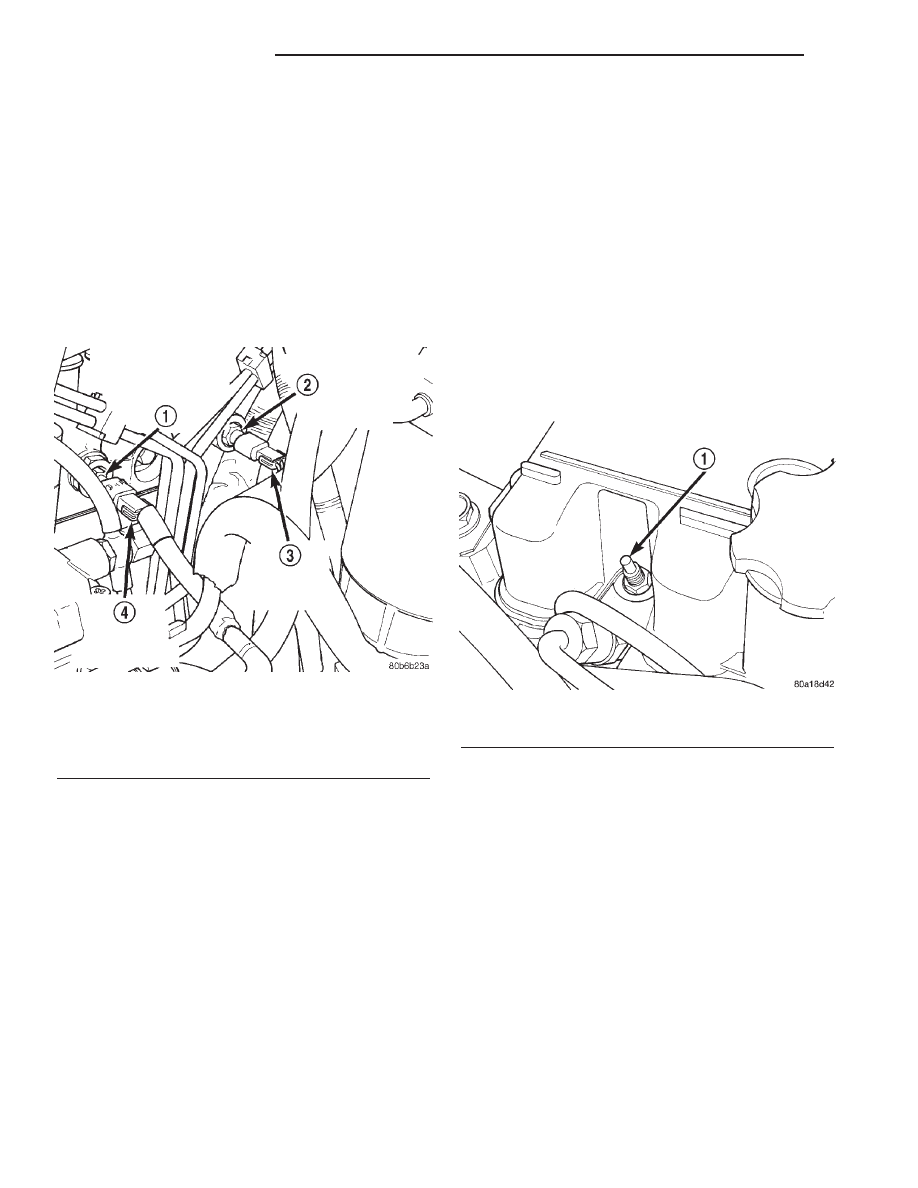Dodge Dakota (R1). Manual - part 577

ENGINE COOLANT
TEMPERATURE SENSOR
DESCRIPTION
The 0–5 volt input from this sensor tells the ECM
and PCM the temperature of the engine coolant.
Based on the voltage received at the ECM, it will
then determine operation of the fuel timing solenoid,
glow plug relay, electrical vacuum modulator (emis-
sion component) and generator (charging system).
The sensor is located on the side of the #3 cylinder
head near the rear of fuel injection pump (Fig. 4).
ENGINE COOLANT TEMPERATURE SENSOR
TEST
For a list of Diagnostic Trouble Codes (DTC’s) for
certain fuel system components, refer to On-Board
Diagnostics in Group 25, Emission Control System.
To test the sensor only, refer to the following:
(1) Disconnect wire harness connector from coolant
temperature sensor.
(2) Test the resistance of the sensor with a high
input impedance (digital) volt–ohmmeter. The resis-
tance (as measured across the sensor terminals)
should be less than 1340 ohms with the engine
warm. Refer to the following Sensor Resistance
(OHMS) chart. Replace the sensor if it is not within
the range of resistance specified in the chart.
(3) Test continuity of the wire harness. Do this
between the ECM wire harness connector and the
sensor connector terminal. Also test continuity of
wire harness to the sensor connector terminal. Refer
to Group 8W for wiring connector and circuitry infor-
mation. Repair the wire harness if an open circuit is
indicated.
(4) After tests are completed, connect electrical
connector to sensor.
GLOW PLUGS
DESCRIPTION
Glow plugs are used to help start a cold or cool
engine. The plug will heat up and glow to heat the
combustion chamber of each cylinder. An individual
plug is used for each cylinder. Each plug is threaded
into the cylinder head above the fuel injector (Fig. 5).
Each plug will momentarily draw approximately 25
amps of electrical current during the initial key–on
cycle. This is on a cold or cool engine. After heating,
the current draw will drop to approximately 9–12
amps per plug.
Total momentary current draw for all four plugs is
approximately 100 amps on a cold engine dropping to
a total of approximately 40 amps after the plugs are
heated.
Electrical operation of the glow plugs are con-
trolled by the glow plug relay. Refer to the previous
Glow Plug Relay—ECM Output for additional infor-
mation.
DIAGNOSIS AND TESTNG - GLOW PLUGS
Hard starting or a rough idle after starting may be
caused by one or more defective glow plugs. Before
testing the glow plugs, a test of the glow plug relays
should be performed. This will ensure that 12V+ is
Fig. 4 Engine Coolant Temperature Sensor Location
1 - PCM ENGINE COOLANT TEMPERATURE (ECT) SENSOR
2 - ECM ENGINE COOLANT TEMPERATURE (ECT) SENSOR
3 - ECM ECT SENSOR HARNESS CONNECTOR
4 - PCM ECT SENSOR HARNESS CONNECTOR
Fig. 5 Glow Plug
1 - GLOW PLUG
14a - 22
FUEL INJECTION
R1